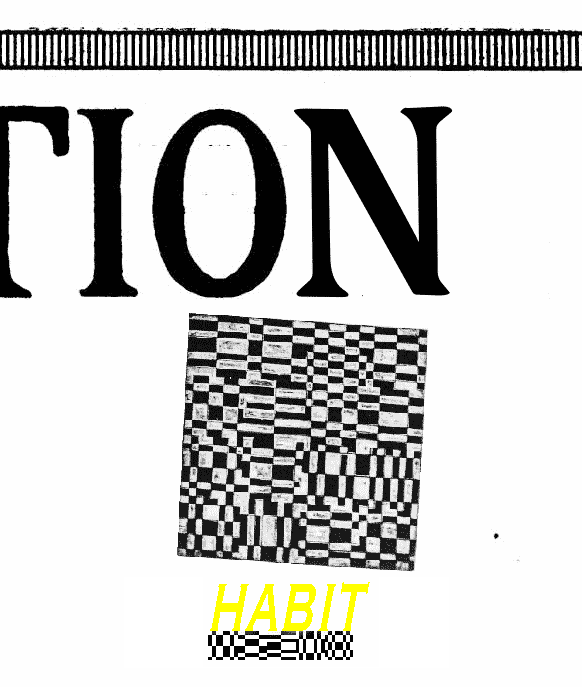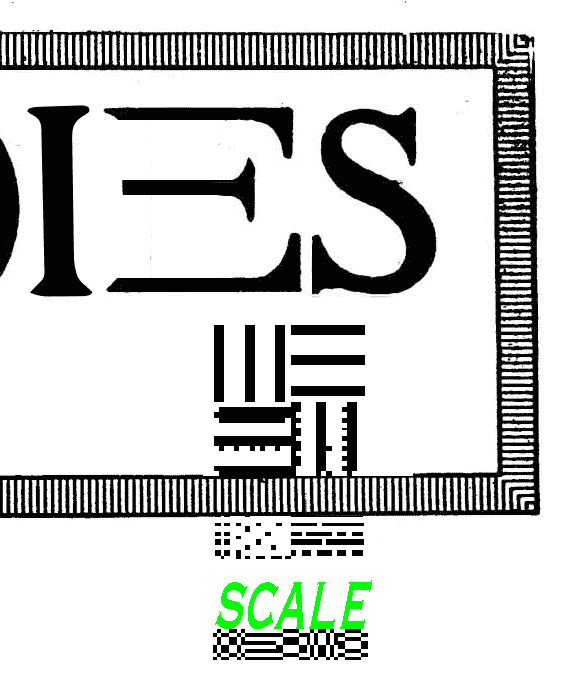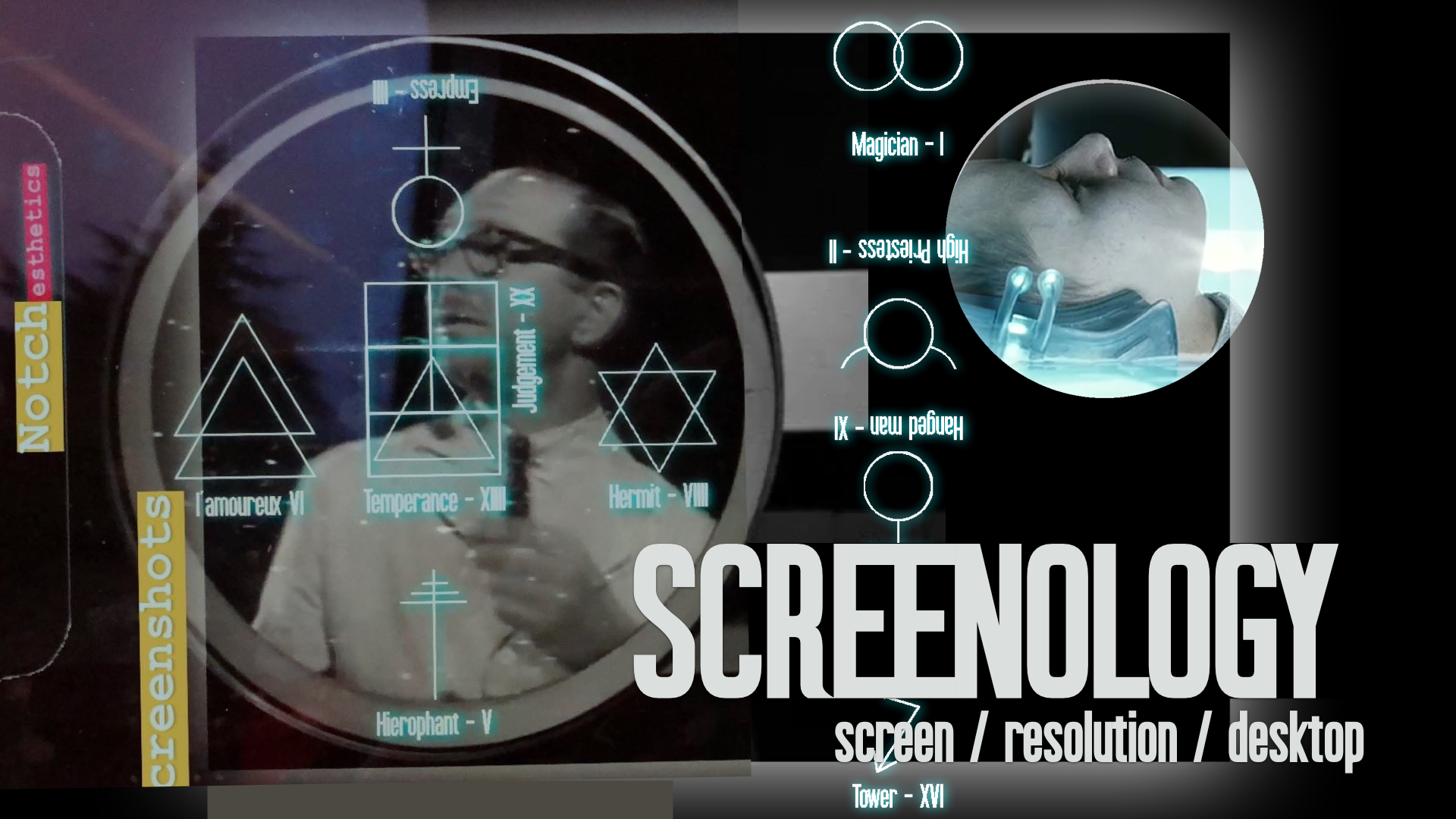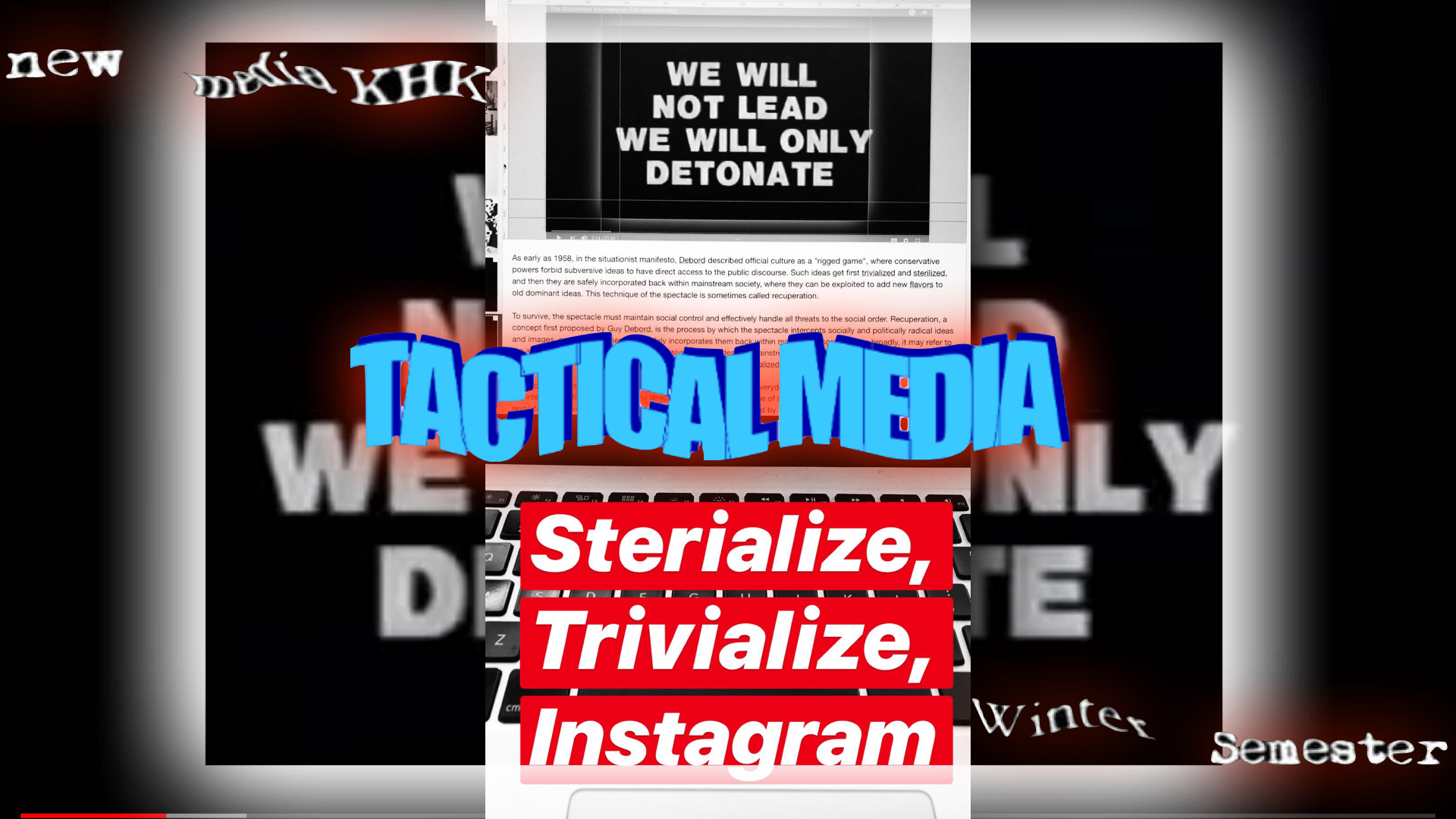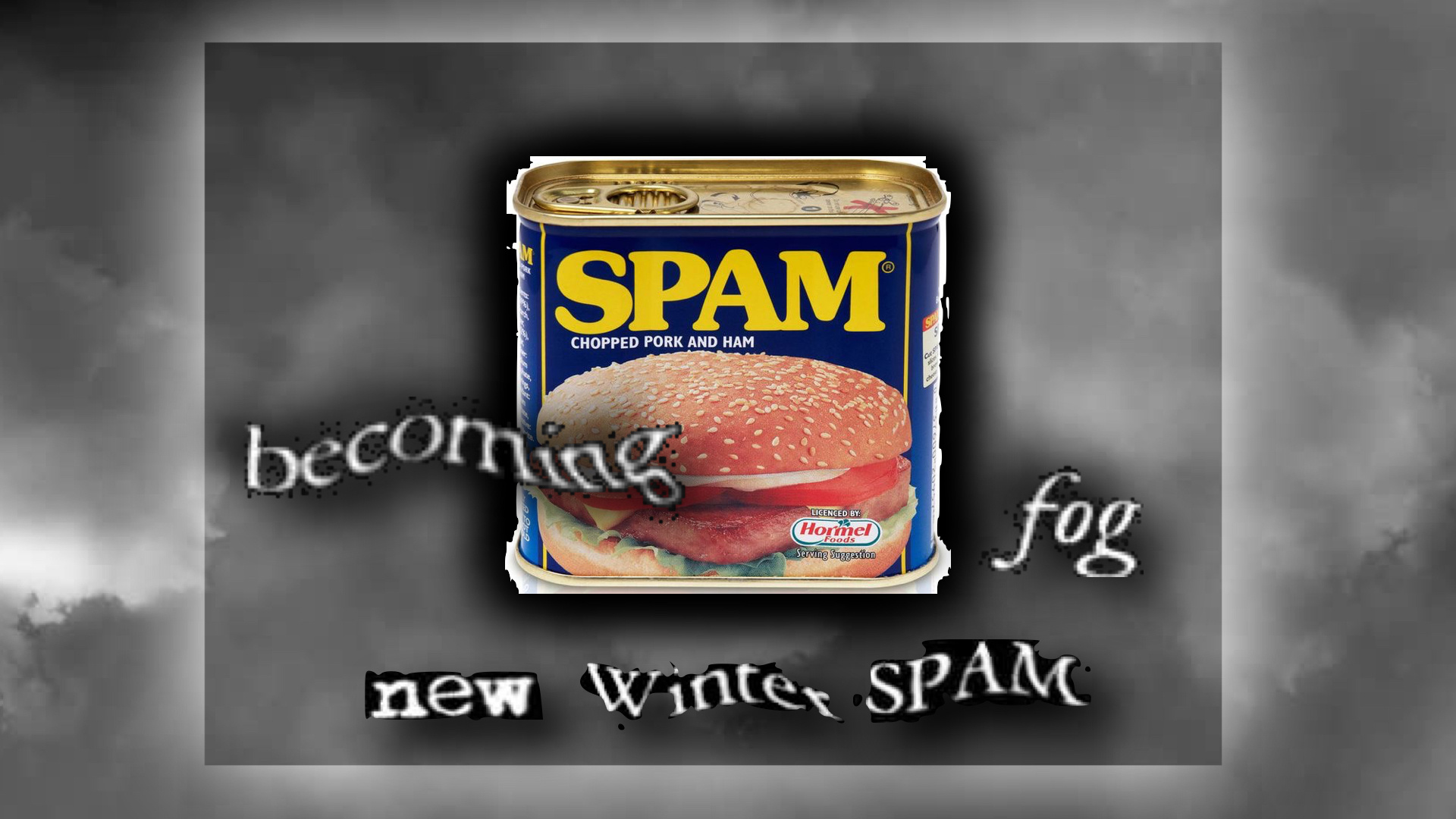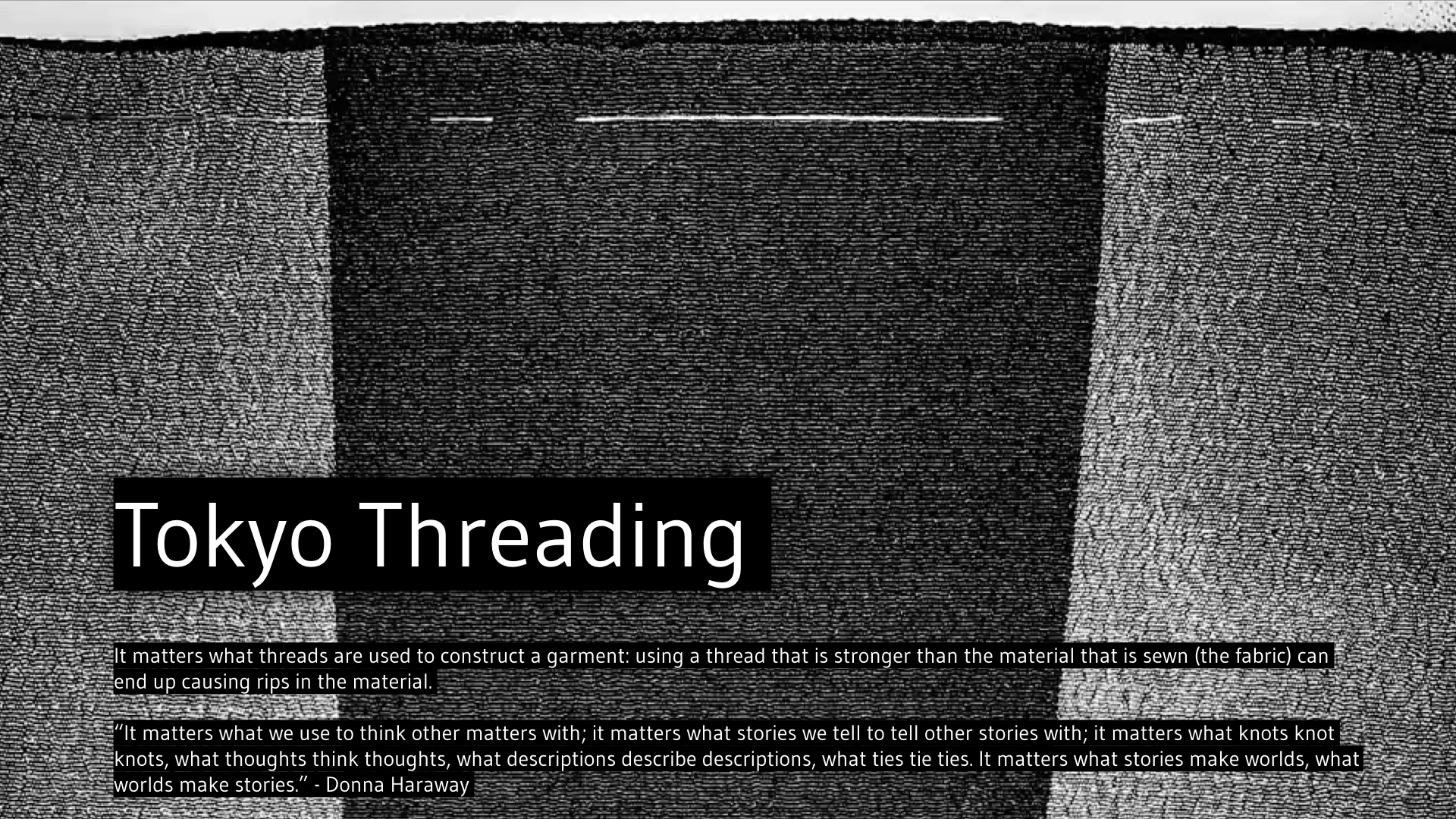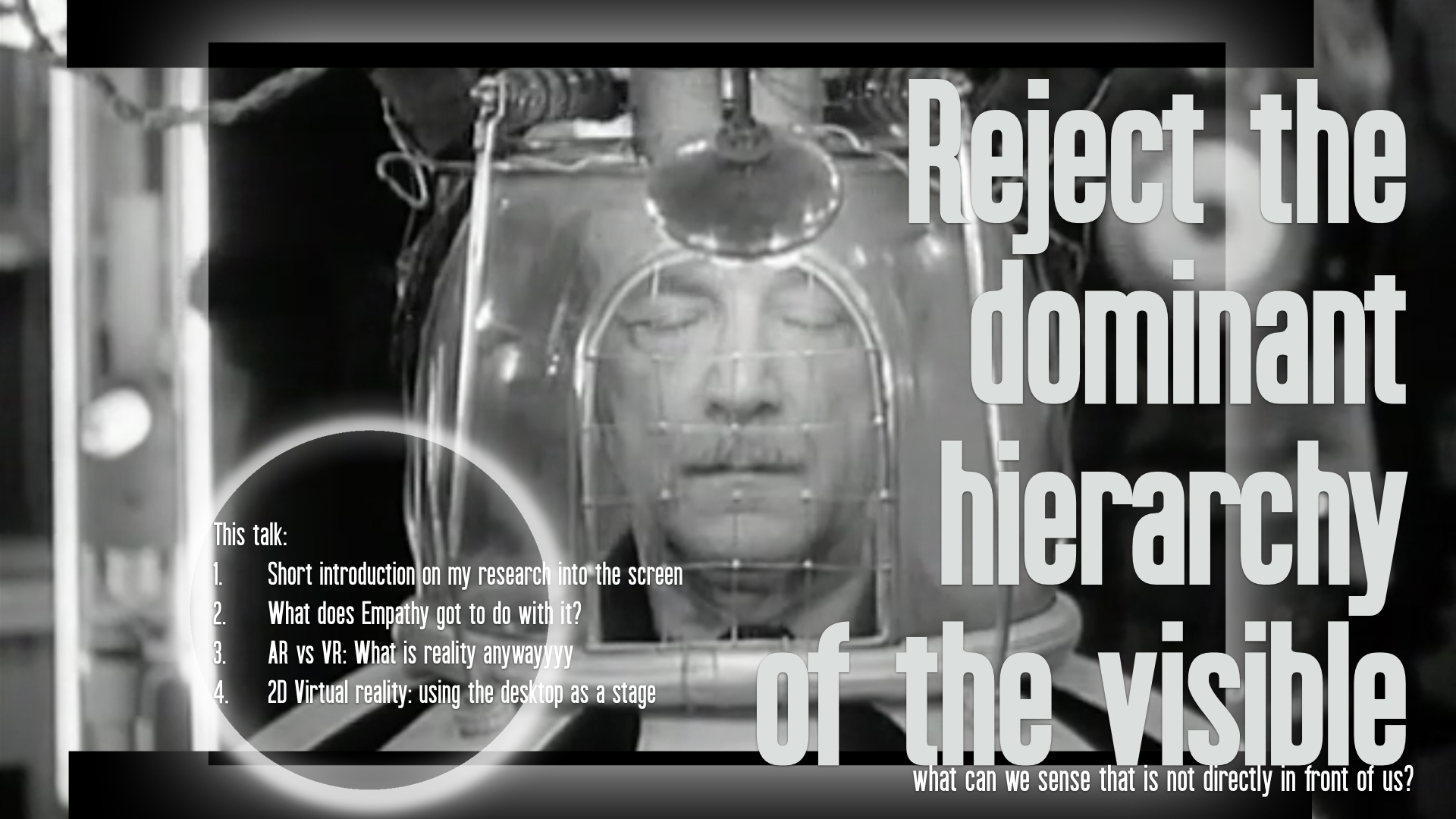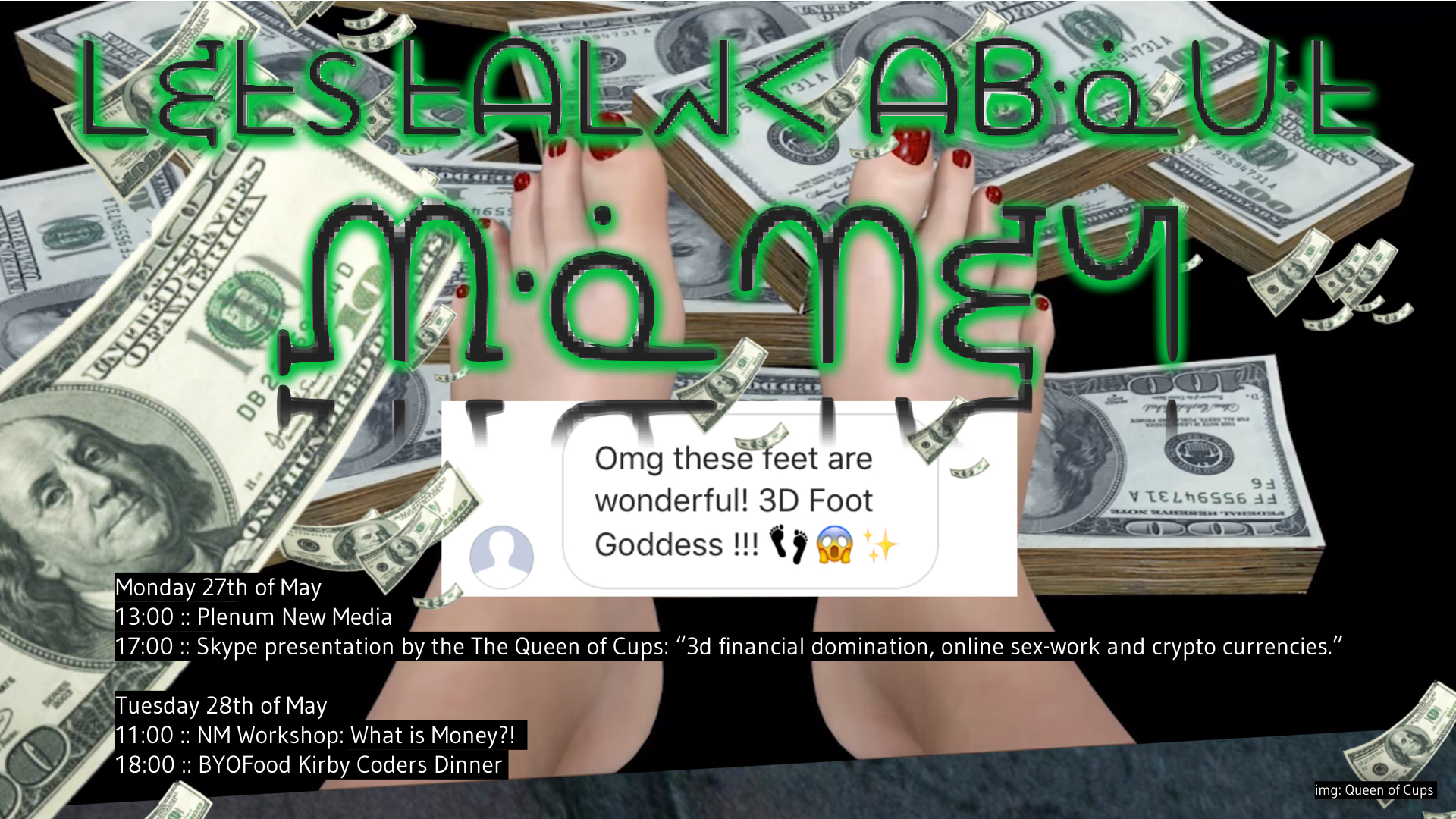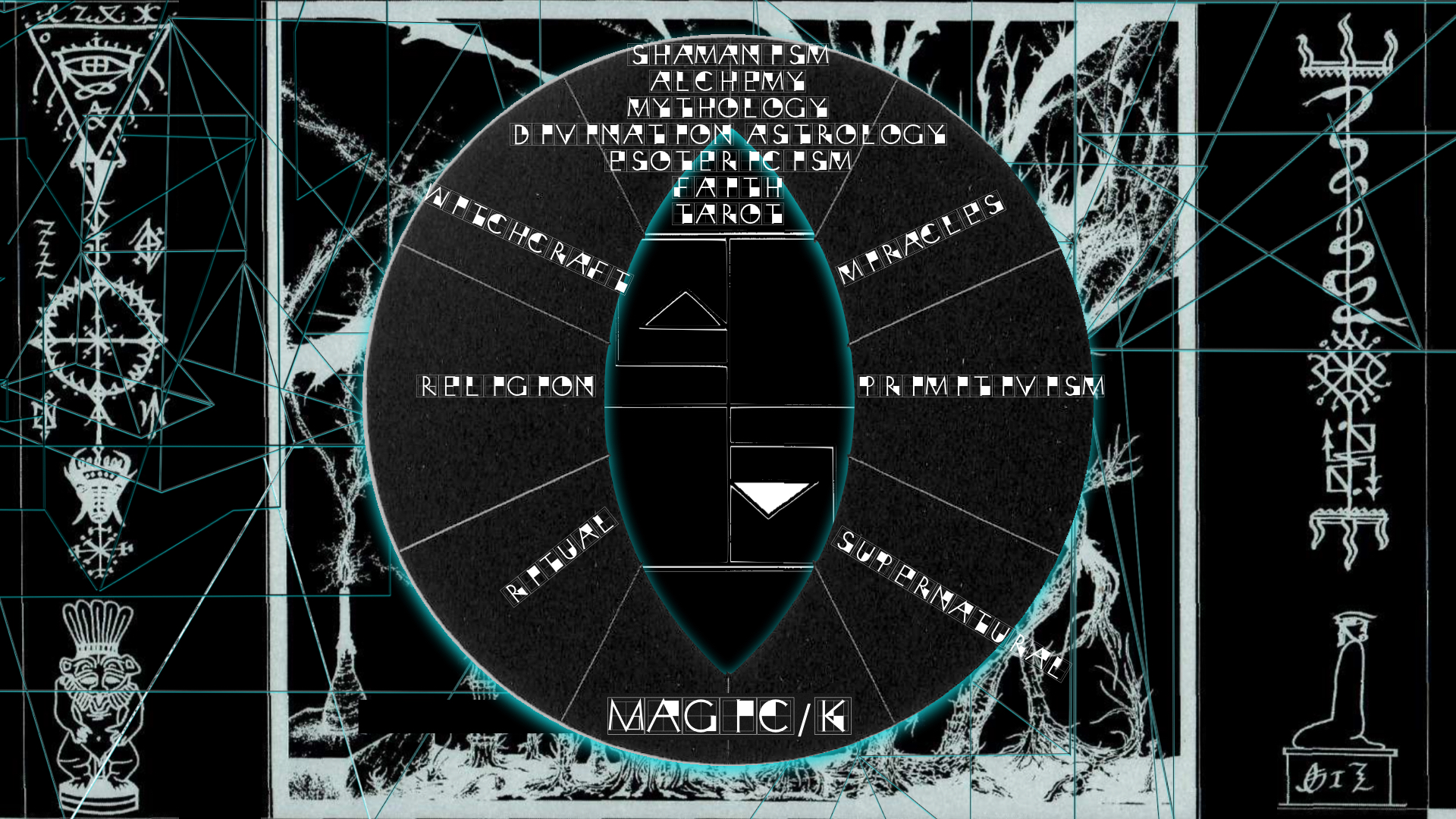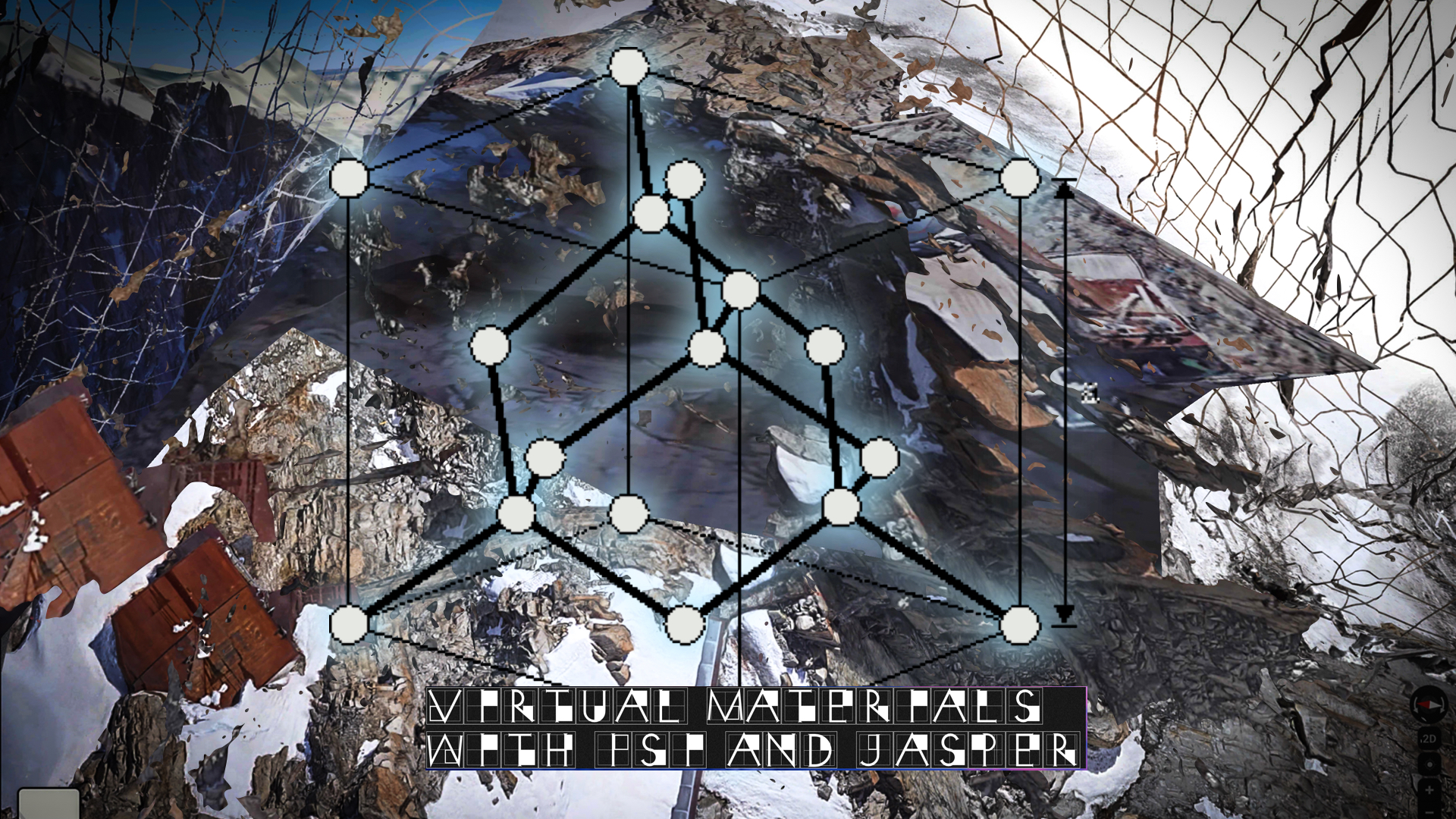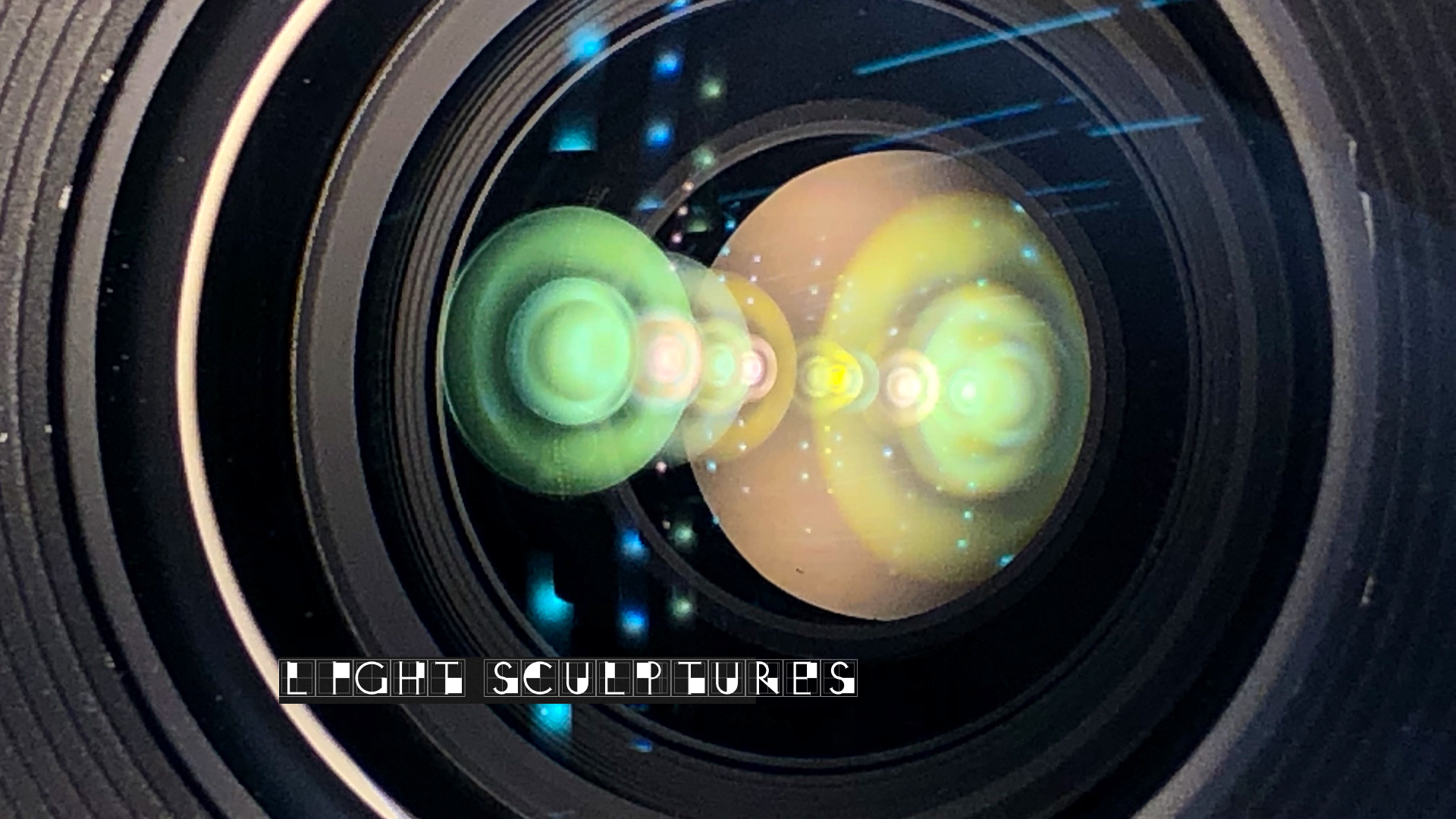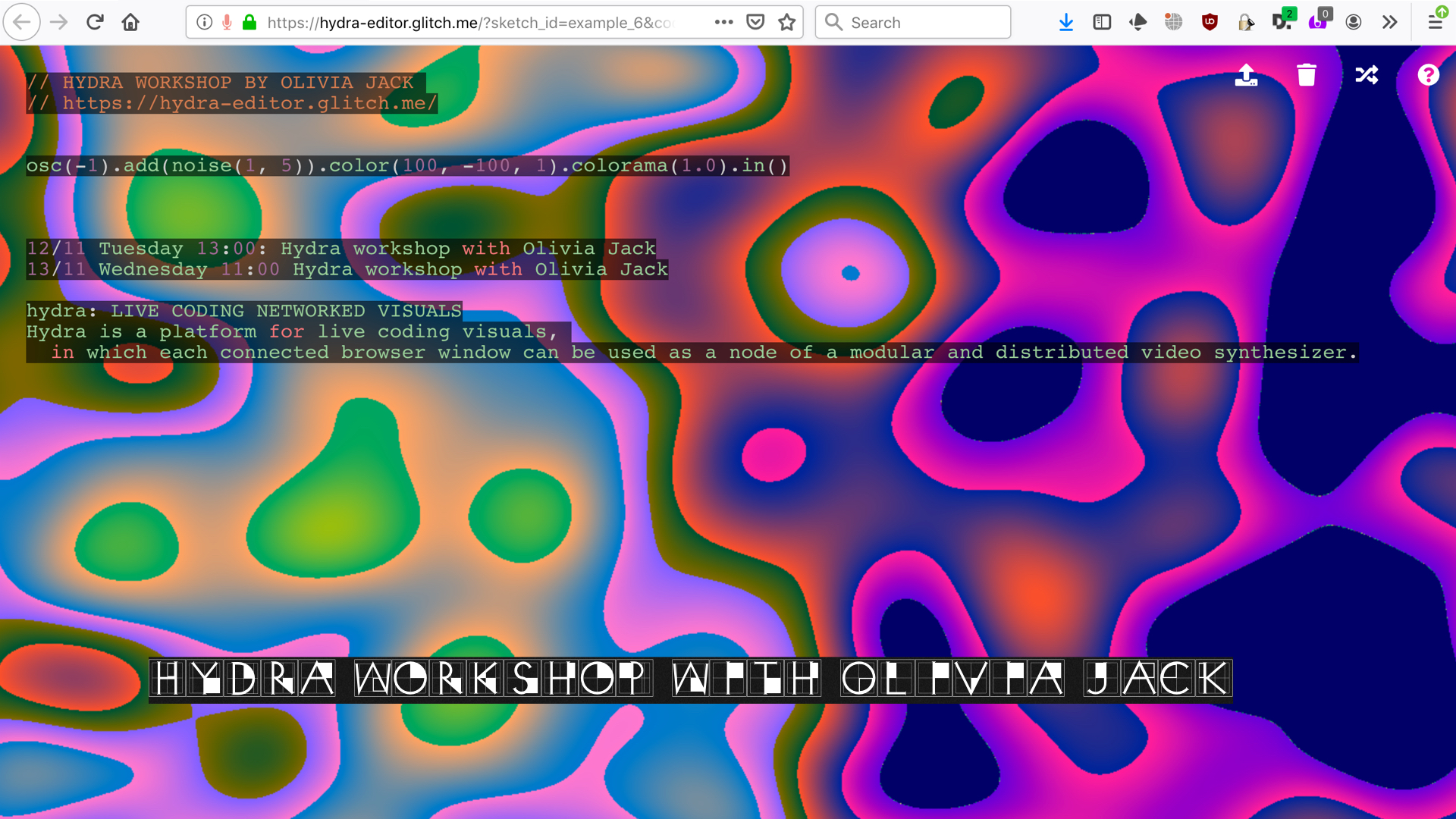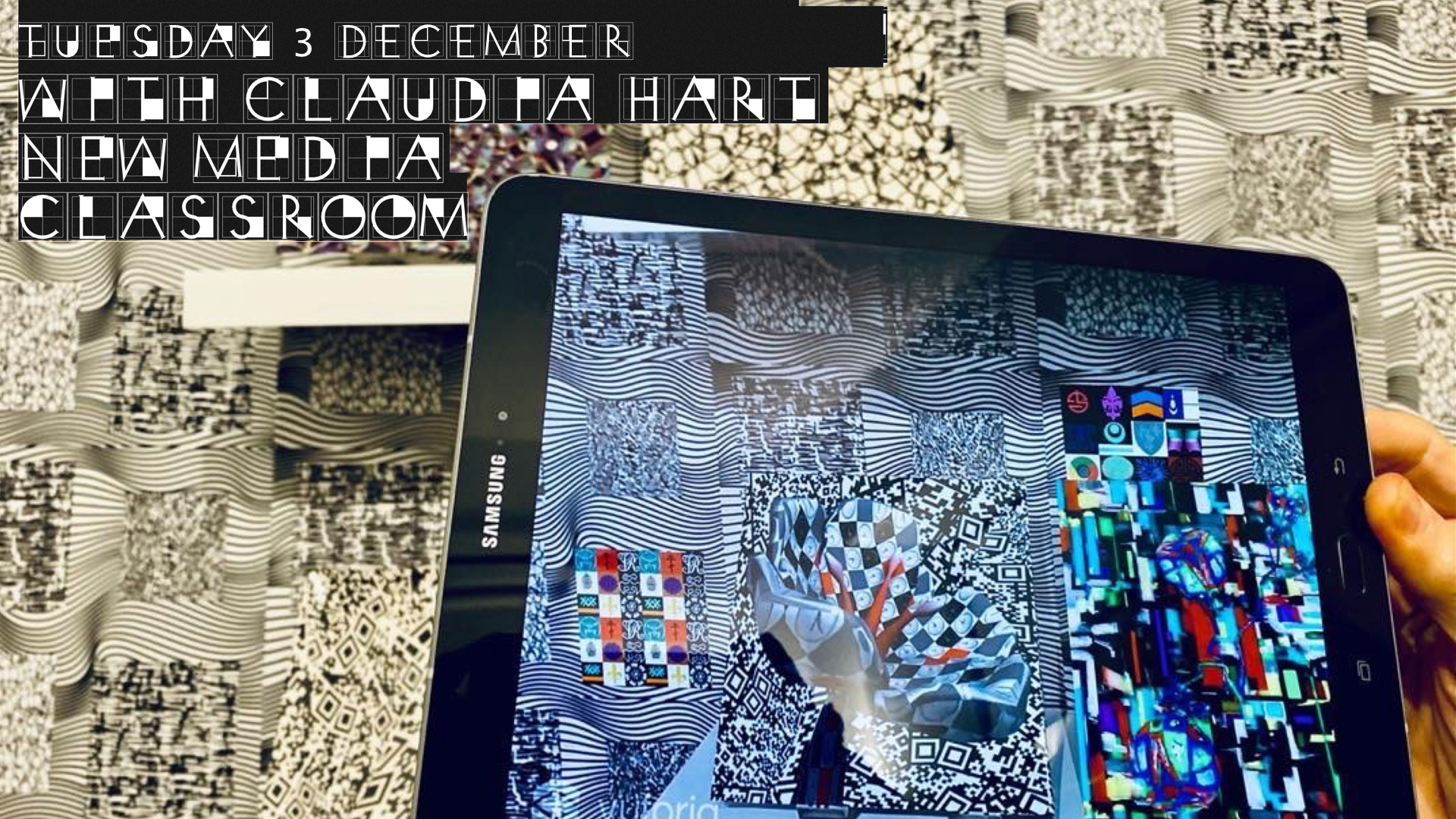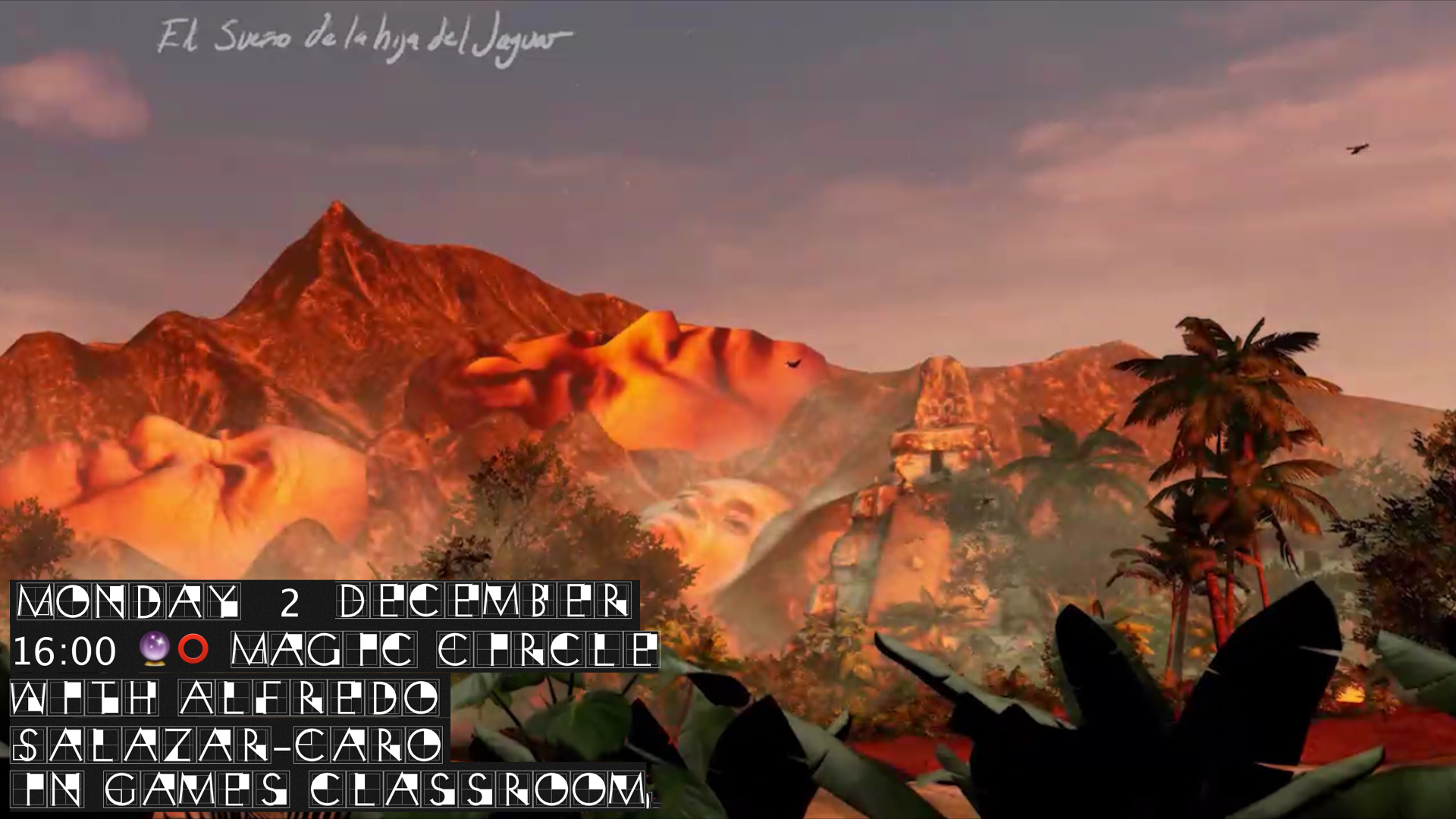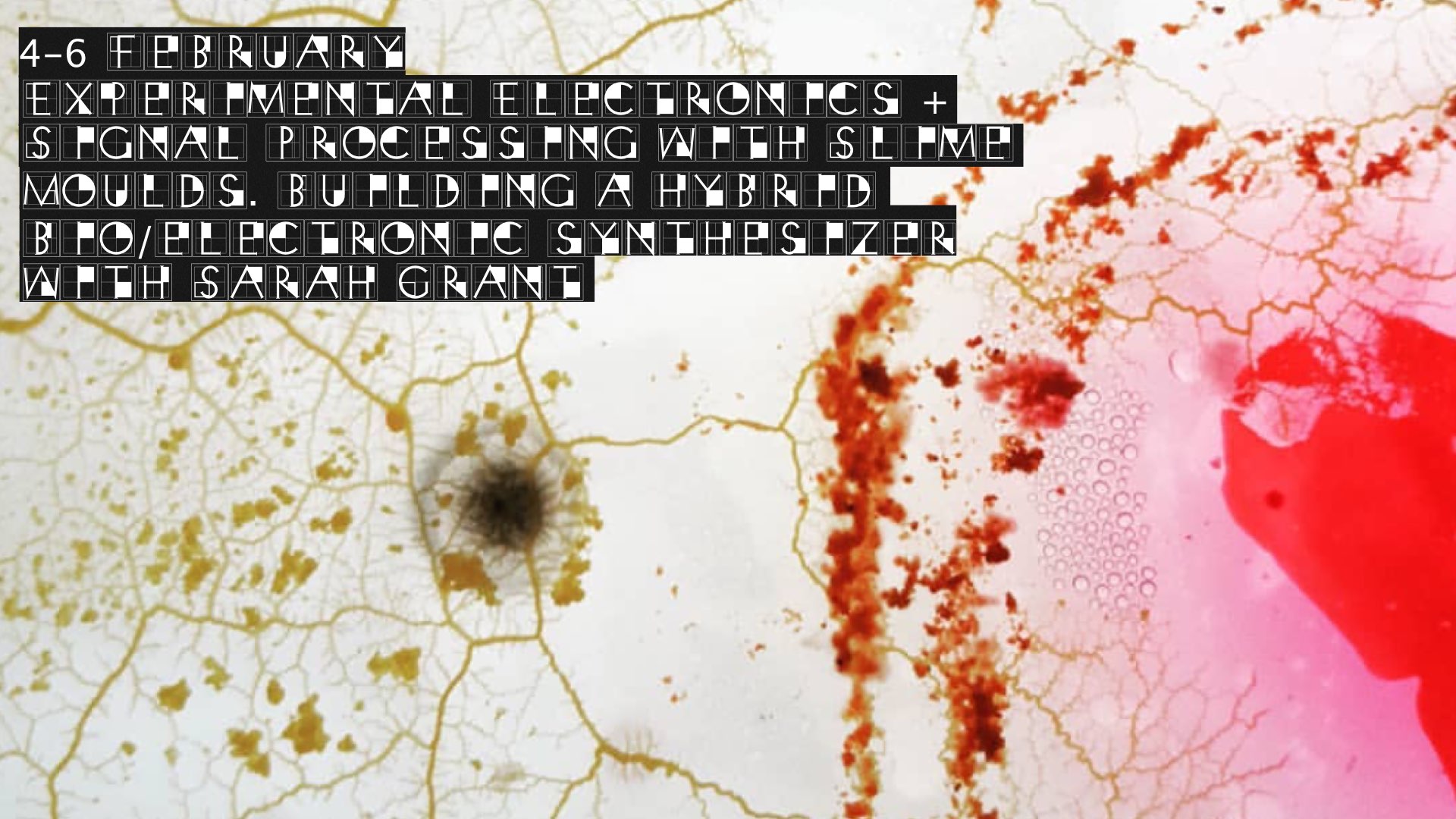︎ Beyond Resolution (i.R.D.: 2020)
︎ Glitch Moment/um (INC: 2011)
︎ Vernacular of File Formats (2010)
︎ Introductionary chapter here
︎ An introduction of my journey into resolution studies,
presented at #34C3, Leipzig, Germany, 2017.
About Resolution Studies as a two year New Media colloquium.
I developed the course “Resolution Studies” during my two years position as Vertretungs Professor New Media at the KHK in Kassel.
In 2020 the curriculum with “What is Contemporary,” while working as artistic researcher, at the KHK.
Resolutions do not only consolidate the ways by which we use our technologies, but also how we do not use them (an effect that is often overlooked).
The standardization of resolutions is a process that generally imposes efficiency, order and functionality on our technologies. It doesn’t only involve the creation of protocols and solutions, but the obfuscation of compromises and black-boxing of alternative possibilities, which are as a result in danger of staying forever unseen or forgotten.
A resolution is the result of a consolidation of (or the forging of a function between) technological materialities. Resolutions involve standards, interfaces and protocols (Galloways’ standards encapsulated inside standard encapsulations) and their pre-designed affordances. The cost of media resolutions is that we have gradually become unaware of the choices and compromises they represent. Resolution studies is a theory about the setting of standards and the studies of compromised, other (speculative) possibilities.
Resolution studies occupies a space connected to protocol, the interface effect, materiality, habit and genealogical media theory.
Why Study Resolutions?
Our (digital) cultures are becoming more and more complex. From deep fakes to post-uncanny or neo-crapstraction - it is hard to stay on top of the dialogue and keep a grip on the new problems or to even find ‘the contemporary discourse’. Is there still a dialogue? What is really happening now?
There is of course not one ‘now’ in a landscape that has as many fractures as it has participants. And there is also not one truth, past, or future to our digital cultures; they vary as much as the diversity of the perspectives of its users.
Resolutions exist on all levels of the engineering process, and involve procedural trade-offs. As a result, the more complex a technology is, the more compromises its renderings involve. However, these actors and their inherent affordances and complexities are increasingly positioned beyond the fold of everyday settings and outside the afforded options of the interface. This is how resolutions do not just function as an interface effect but also as a hyperopic lens, obfuscating some of the most immediate stakes and possible alternative resolutions of media. Unknowingly, both user and audience suffer from technological hyperopia; a condition of ‘farsightedness’ that does not allow them to see what processes they are taking part in, or that they trigger while clacking on the a keyboard underneath their hands. Rather, they just focus on a final ends to a means.
As an artist, I find myself responsible to not only critically engage with the new materialities of the digital, but also - and I believe that this is where the ‘new’ (of new media - if you still want to use that term) or the contemporary comes in - to develop a certain fluid literacy of these constantly developing and mutating material languages that impose constraints and qualities on the technologies we work with. To truly engage with digital culture means to be able to formulate or take a critical point of view, involving analysis and active change through building (speculative) alternatives. A process that requires both literacy and training, which is not readily available or accessible for everyone.
Through this research, which is both practice based and theoretical, I wish to uncover these speculative, anti-utopic, lost and unseen or simply "too good to be implemented" resolutions -- to produce new ways to perceive through and use our technologies. To shed a light on the shadow side of resolutions. Whatever is not captured within the framework of our resolutions remains invisible - but these alternatives solutions may still be lingering the realm of alternative possibilities, waiting to be implemented.
Finally, I believe that working as an artist is as much about creating and developing modes of thinking as it is about nurturing and sharing that knowledge acquired through this practice. Let me put extra emphasis on the importance of sharing: all art I create is available online, even after it has been acquired by a third party. Besides, I share the curriculums I develop, presentations and papers I write here. COPY <IT> RIGHT!
I developed the course “Resolution Studies” during my two years position as Vertretungs Professor New Media at the KHK in Kassel.
In 2020 the curriculum with “What is Contemporary,” while working as artistic researcher, at the KHK.
Resolutions do not only consolidate the ways by which we use our technologies, but also how we do not use them (an effect that is often overlooked).
The standardization of resolutions is a process that generally imposes efficiency, order and functionality on our technologies. It doesn’t only involve the creation of protocols and solutions, but the obfuscation of compromises and black-boxing of alternative possibilities, which are as a result in danger of staying forever unseen or forgotten.
A resolution is the result of a consolidation of (or the forging of a function between) technological materialities. Resolutions involve standards, interfaces and protocols (Galloways’ standards encapsulated inside standard encapsulations) and their pre-designed affordances. The cost of media resolutions is that we have gradually become unaware of the choices and compromises they represent. Resolution studies is a theory about the setting of standards and the studies of compromised, other (speculative) possibilities.
Resolution studies occupies a space connected to protocol, the interface effect, materiality, habit and genealogical media theory.
Why Study Resolutions?
Our (digital) cultures are becoming more and more complex. From deep fakes to post-uncanny or neo-crapstraction - it is hard to stay on top of the dialogue and keep a grip on the new problems or to even find ‘the contemporary discourse’. Is there still a dialogue? What is really happening now?
There is of course not one ‘now’ in a landscape that has as many fractures as it has participants. And there is also not one truth, past, or future to our digital cultures; they vary as much as the diversity of the perspectives of its users.
Resolutions exist on all levels of the engineering process, and involve procedural trade-offs. As a result, the more complex a technology is, the more compromises its renderings involve. However, these actors and their inherent affordances and complexities are increasingly positioned beyond the fold of everyday settings and outside the afforded options of the interface. This is how resolutions do not just function as an interface effect but also as a hyperopic lens, obfuscating some of the most immediate stakes and possible alternative resolutions of media. Unknowingly, both user and audience suffer from technological hyperopia; a condition of ‘farsightedness’ that does not allow them to see what processes they are taking part in, or that they trigger while clacking on the a keyboard underneath their hands. Rather, they just focus on a final ends to a means.
As an artist, I find myself responsible to not only critically engage with the new materialities of the digital, but also - and I believe that this is where the ‘new’ (of new media - if you still want to use that term) or the contemporary comes in - to develop a certain fluid literacy of these constantly developing and mutating material languages that impose constraints and qualities on the technologies we work with. To truly engage with digital culture means to be able to formulate or take a critical point of view, involving analysis and active change through building (speculative) alternatives. A process that requires both literacy and training, which is not readily available or accessible for everyone.
Through this research, which is both practice based and theoretical, I wish to uncover these speculative, anti-utopic, lost and unseen or simply "too good to be implemented" resolutions -- to produce new ways to perceive through and use our technologies. To shed a light on the shadow side of resolutions. Whatever is not captured within the framework of our resolutions remains invisible - but these alternatives solutions may still be lingering the realm of alternative possibilities, waiting to be implemented.
Finally, I believe that working as an artist is as much about creating and developing modes of thinking as it is about nurturing and sharing that knowledge acquired through this practice. Let me put extra emphasis on the importance of sharing: all art I create is available online, even after it has been acquired by a third party. Besides, I share the curriculums I develop, presentations and papers I write here. COPY <IT> RIGHT!
Summer Semester 2018 KHK ‘Beyond Resolution’ slides.
Resolution Dispute 0000 : Materiality
Resolution Dispute 0001 : Genealogy vs. /his/tory
Resolution Dispute 0010 : Habit
Resolution Dispute 0011 : Institutional Tactics
Resolution Dispute 0100 : Scaling as Violence
Winter Semester 2018/2019 KHK slides.
Screenology Seminar
Tactical Media Seminar
Becoming Fog Seminar
Summer Semester 2019 KHK ‘Beyond Resolution’ slides.
Alternative formats: Manifestos
Emojis - one day workshop
Timetravelling - one day workshop
Posthuman Glossary - one day workshop
Monopolized services (Included an Amazon Fullfilment centre visit with class)
Lets talk about money! (This block started with a fantastic presentation by the Queen of Cups “3D financial domination, online sex work and crypto currencies”)
Resolution Dispute 0000 : Materiality
Resolution Dispute 0001 : Genealogy vs. /his/tory
Resolution Dispute 0010 : Habit
Resolution Dispute 0011 : Institutional Tactics
Resolution Dispute 0100 : Scaling as Violence
Winter Semester 2018/2019 KHK slides.
Screenology Seminar
Tactical Media Seminar
Becoming Fog Seminar
Summer Semester 2019 KHK ‘Beyond Resolution’ slides.
Alternative formats: Manifestos
Emojis - one day workshop
Timetravelling - one day workshop
Posthuman Glossary - one day workshop
Monopolized services (Included an Amazon Fullfilment centre visit with class)
Lets talk about money! (This block started with a fantastic presentation by the Queen of Cups “3D financial domination, online sex work and crypto currencies”)
Winter Semester 2019 KHK ‘Beyond Resolution’ slides.
Genre vs Memes
Any sufficiently advanced technology is indistinguishable from Magic/K
Virtual Materials with Topicbird / Digital light
Whiteout
Light Sculptures
Impossible images
Workshops and guest lectures
Hydra workshop with Olivia Jack
Workshop digital shaders with Topicbird
🔮 ⭕ Magic Circle with Claudia Hart and Alfredo Salazar Caro
Slime Mold synthesizer Workshop with Sarah Grant
.
Winter Semester 2020: What is Contemporary?
11 week long seminar on the contemporary, poked and prodded through different topics of interest, using contemporary warfare and new media technologies as red thread.
Genre vs Memes
Any sufficiently advanced technology is indistinguishable from Magic/K
Virtual Materials with Topicbird / Digital light
Whiteout
Light Sculptures
Impossible images
Workshops and guest lectures
Hydra workshop with Olivia Jack
Workshop digital shaders with Topicbird
🔮 ⭕ Magic Circle with Claudia Hart and Alfredo Salazar Caro
Slime Mold synthesizer Workshop with Sarah Grant
.
Winter Semester 2020: What is Contemporary?
11 week long seminar on the contemporary, poked and prodded through different topics of interest, using contemporary warfare and new media technologies as red thread.
1. Summer Semester 2018 KHK ‘Beyond Resolution’ slides.
Resolution Dispute 0000 : Materiality
A reflexive approach to materiality makes it possible to re-conceptualize materiality itself as ‘the interplay between a text’s physical characteristics and its signifying strategies’. Rather than thinking in the mediums’ material as fixed in physicality, a re-definition of materiality is useful because it opens the possibility of considering any text as embodied entity “while still maintaining a central focus on interpretation. In this view of materiality, it is not merely an inert collection of physical properties but a dynamic quality that emerges from the interplay between the text as a physical artifact, its conceptual content, and the interpretive activities of readers and writers.”
Reflections on materiality should not just happen on a technological level. To fully understand a work, each level of materiality should be studied: the physical and technological artifact, its conceptual content, and the interpretive activities of reader, artist and audience. [the choice of any] digital material is not innocent or meaningless. With enough knowledge of the material, an investigation into digital materialilty can uncover stories about the origin and history of the material, by others.
Resolution Dispute 0001 : Genealogy vs. /his/tory
While history often refers to the study of lines of descent and origin, the development of families and the tracing of their lineages, in reality, especially in the digital realm, the development of material does not follow any traditional lines of descent. If at all, the ‘historical continuity’ of digital material is one of breaks, voids, bends, forks, in-betweens, legacy, instabilities, ossification, abandonment and turns. In fact, there is no such thing as a ‘technological continuum’. Rather than ‘the history of a digital material’, there are many, parallel, interconnected non-linear, fragmented and overlapping discourses which impact each other in many directions. Thus, digital material, is best described following a genealogical model.
Genealogy does not pretend to go back in time, to restore what Foucault calls an "unbroken continuity, that operates beyond the dispersion of forgotten things". Genealogy is a specific type of history that deconstructs that which once was unified and makes a continuity of discontinuities. It researches the descents and emergences of how systems of affiliation come into play and maps the understanding and meaning of the object accordingly.
Genealogy considers the many affiliated, interconnected and (geo-)fragmented processes that build their own discourses: it intends to shine a light on why particular technologies develop a social-political momentum in a specific point in time and how this momentum changes over time. To write a genealogy means to write the stories of emergence of a use or practice; it reveals the pre-existing battles present at the moment of arising. It threads different strands constructed from ambiguous, pre-existing discourses, it (inter)connects or juxtaposes generations of different communities and their working methods, conceptual themes and politics.
There is no such thing as a complete history. There are only the many stories from different perspectives, derived from uncertain interpretations, that are neither true nor false and the many stories of media technology are constantly subject to revision.
Resolution Dispute 0010 : Habit
Following the ideal logic of transparent immediacy, technology is designed in such a way that the user will forget about the presence of the medium. Generally, technology aims to offer an uninterrupted flow of functionality and information. This concept of flow is not just a trait of the machine, but also a feature of society as a whole, writes DeLanda.1 DeLanda distinguishes between chaotic disconnected flows and stable flows of matter, that move in continuous variations, conveying singularities. DeLanda also references Deleuze and Guattari, who describe flow in terms of the beliefs and desires that both stimulate and maintain society.2 Deleuze and Guattari write that a flow is something that comes into existence over long periods of time. Within these periods, conventions, customs and individual habits are established, while deviations tend to become rare occurrences and are often (mis)understood as accidents (or in computation: glitches). Although the meaningfulness of every day life might in fact be disclosed within these rare occurances, their impact or relevance is often ruled out, because of social tendencies to emphasize the norm.
To move beyond resolution also means to move beyond the habitual. One way to do this is by creating noise, for instance in the form of glitch: a short lived fault or break from an expected flow of operation within a (digital) system. The glitch is a puzzling, difficult to define and enchanting noise artifact; it reveals itself as accident, chaos or laceration and gives a glimpse into normally obfuscated machine language. Rather than creating the illusion of a transparent, well-working interface to information, the glitch can impose both technological and perceptual challenges to habitual and ideological conventions. It shows the machine revealing itself. Suddenly, the computer appears unconventionally deep, in contrast to the more banal, predictable, surface-level behaviors of ‘normal’ machines and systems.
To really understand the complexity of the user’s perceptual experience it is important to focus on these rare occurances - to create an awareness of the users habits by use of, for instance, the accident.
Resolution Dispute 0011 : Institutional Tactics
In the 1970s Joseph Goguen and Rod Burstall wrote that ‘institution’ refers to a slightly more compound framework, that deals with the growing complexities, connecting different logical systems (such as databases and programming languages) within computer sciences. A main result of these non-logical institutions is that different logical systems can be glued together at a substrata level, forming illogical frameworks through which computation also takes place.
Resolution Dispute 0100 : Scaling as Violence
What happens when something exist outside the dimensions or system units of scale? In order to distinguish something of significance from its background environment we must first be able to perceive it. If it remains invisible, inaudible, intangible, or unmeasurable it remains indiscribable and therefore unknowable at least to most of us. [or: Distances from and behind the screen] Scale, aspect ratio, size, frequency
2. Winter Semester 2018/2019 KHK ‘Beyond Resolution’ slides.
Screenology Seminar
Includes a presentation first given during Dutch Film Festival Utrecht.
A three week seminar on the screen as display, introducing a short history of the GUI and the interface effect.
The Sci-Fi screen in Hollywood movies and contemporary methods of decollage.
The third week focuses on screenshots and the Desktop Documentary genre.
Tactical Media Seminar
The seminar starts with introducing some of the precursors / roots of tactical media and then moves on to introduce key players within the Tactical Media movement of the 90s. Finally it introduces some works of former tactical media artists and artworks made inspired by the Tactical Media movement and some critique on its revival in 2017.
What could Tactical Media be in 2019, in an age of platformization and when tactical interventions on the turf of the provider are almost impossible?
Becoming Fog Seminar
An introduction to spam is followed by a description of the shifts in the advertisement industry (from billboards / banners to targeted advertising). This is followed by an introduction to the ghosts of the internet - the first friends, bots and other virtual assistants that are net-bound. The block ends by introducing several privacy practices or ‘becoming fog’.
3. Summer Semester 2019 KHK ‘Beyond Resolution’ slides.
Alternative formats: Manifestos
From the extinvion rebellion to Xenofeminism, Occupy Wallstreet to Black Lives Matter or Glitch to #Additivism - all these movements have used manifestos to announce themselves to the world. The manifesto genre is by definition timely and politically focused. It criticizes a present state of affairs but also announces its passing, proclaiming the advent of a new movement or even of a new era. Manifestos are often a call for a new vision, approach, program, or genre: they are the site of political, cultural and social experimentation in our contemporary world.
Manifestos exist to challenge and provoke - to enhance conscious self-expression and empowerment. But how to write a contemporary manifesto in 2019?
How to combine a call for action with ciritical digital design to fundamentally expand the character and scope of the genre itself?
AR, VR and ‘empathy’. A presentation for Impakt, Utrecht, Netherlands.
Impakt asked me to give a short presentation on AR, VR and empathy. VR - or ‘the empathy machine’ - has often been used to tell the story of young refugee girls. Can VR also provoke empathy without the exploitation of minor immigrant girls? And what is so good about empathy - what do we win with empathy if we do not have compassion, sympathy, morality or other forms of ethics at play? How easily do we cross the line from emphaty to commiserate disaster tourism?
And what is the relation between AR and VR? Maybe a use of the world ‘reality’ a misnomer for what better could be understood as chimera?
Emojis - one day workshop
The earliest known mobile phone in Japan to include a set of emoji was released by J-Phone on November 1, 1997. The set of 90 emoji included many that would later be added to the Unicode Standard, such as Pile of Poo 💩, but as the phone was very expensive they were not widely used at the time. In 1999, Shigetaka Kurita created the first widely-used set of emoji which was implemented on NTT DoCoMo's i-mode mobile Internet platform.
Today, anyone can submit a proposal for an emoji character, but the implementation of new emoji is regulated by the Unicode Consortium. Yet every year 70 new emojis are chosen and implemented. How?: the voting members of the Unicode Constortium (Silicon Valley _ White Male Conservatives _ ) pay good �💵💴💶💰💷$ to have a vote.
As a result, certain emojis are missing, while other emojis are the linchpin of controversy.
Timetravelling - one day workshop
With the advent of the digital, time is no longer what it used to be. Instances can be jumped, repeated or stamped: the digital has introduced a new experience of time. But before making such a statement, we first need to discuss the dimension of time.
According to Hillel Schwartz, first there was Aeon time. Aeon time is universally ongoing and impersonal time. As an eternal flux and flow it is always ‘just there’. Schwartz connects aeon time to background noise, the noise that has been there since the Big Bang, the noise that will always exist and is usually suppressed but remains part of any system.
Secondly, Schwartz explains, there is Kronos, from which the term ‘chronology’ stems. Kronos refers to linear, one directional time, business time or incremental, daily routine time. Schwartz connects Kronos to repetitive noise, such as the noise of a dripping faucet. It is sickeningly rhythmic and does not move backwards.
Finally there is Kairos, which is best described as the time of opportunity. This time is dangerous and thrilling, however it can also present itself subtly. Schwarz connects Kairos to the noise of revolution. It is the shriek of invention. The time when someone urges you to seize the moment.
But Schwartz is of course not the only one outlining a general definition of time. Many men have attempted to describe time before him, and many have after... Here Schwartz is merely a starting point to discuss and travel time.
What can be images of time? And what other radical ideas of time are there?
Posthuman Glossary - one day workshop
Posthuman Critical theory is a convergence of posthumanism and post anthropocentrism.
In humanism the 'man' from the West sets the standards to measure all things. PCT rejects any nostalgia for humanism or the 'enlightened man of reason'.
PCT also rejects to see the world as a hierarchy of species and human exceptionalism - as is celebrated in anthropocentrism. As a result, PCT pratices a ‘dis-identification of the familiar’.
Posthuman Critical Theory believes that:
- subjectivity does not make the ‘anthropos’.
- we need to create a sustainable notion of vitalist materialism - the belief that matter itself has vitality and is alive, no matter how lifeless it may appear to be. In doing so, objects and things are described as having agency (Jane Bennett / D&G).
- we need to enlarge the scope of ethical accountability.
Critical (in Crtitical theory) refers to both being critical and creative. Critical is as a way to create cartographies of power, to account for and learn to relinquish unearned privileges and implicit power privileges. The creative side enlists the resources of the imagination and a new alliance of critique. Politically speaking, posthuman critical theory is a practical philospohy that aims at composing a 'missing people', to refashion and reshape the human to include all kinds of bodies (immigrant, of color, female, crip)
Monopolized services (Included an Amazon Fullfilment centre visit with class)
Monopolies and patents shape the (media) industry by strategies such as standardization, undercutting and prohibition. We talk about a few of these stories and about recent strategies of for instance Amazon, that by means of vertical and horizontal intergration has managed to cut out and bypass whole tiers in the chains of production and distribution. In doing so, the concept of ‘carriage’ - to carry over a particular product, service or provide a platform for a certain producer, has gotten renewed importance.
Lets talk about money! (This block started with a fantastic presentation by the Queen of Cups “3D financial domination, online sex work and crypto currencies”)
Money is nothing. Even so, it can move everything. But how can nothing move everything? ...Its because the concept of money is made of agreements, of solidarity, of trust. Not just moral or political trust, but agreements that resonate in a sort of ‘condition’. (- paraphased from the K foundation burned a million quid)
Money is often described in terms of time, freedom, or as an object rooted in the colonialist, modernist, or imperial projects of standardization.
But when do we actually learn to talk about money? Did someone teach you how money works, what are the rules of who gets to own, earn or safe money and how and what are the histories and ‘logics’ of inflation and value?
In fact, money is quite a fictual construct that is only worth something in ‘the right’ context or space - in the ‘condition’ that ascribes its worth. In this condition - or rather at the fringes of this space, the value of money also gives rise to alternative spaces, such as tax havens, Extrastates or bodies of de-regulated flows of capital.
4. Winter Semester 2019 KHK ‘Beyond Resolution’ slides.
Genre vs Memes
Any sufficiently advanced technology is indistinguishable from Magic/K
Virtual Materials with Topicbird / Digital light
Whiteout
Light Sculptures
Impossible images
Workshops and guest lectures
Hydra workshop with Olivia Jack
Workshop digital shaders with Topicbird
🔮 ⭕ Magic Circle with Claudia Hart and Alfredo Salazar Caro
Slime Mold synthesizer Workshop with Sarah Grant

Other or older presentations:
Creating Critical Environments (Gray Area Festival, San Francisco, USA: 2019)
AR, VR and ‘empathy’. A presentation for Impakt, Utrecht, Netherlands.
Impakt asked me to give a short presentation on AR, VR and empathy. VR - or ‘the empathy machine’ - has often been used to tell the story of young refugee girls. Can VR also provoke empathy without the exploitation of minor immigrant girls? And what is so good about empathy - what do we win with empathy if we do not practice compassion, sympathy, morality or other forms of ethical consideration? How easily do we cross the line from emphaty to commiserate disaster tourism?
And what is the relation between AR and VR?
Maybe the use of the world ‘reality’ a misnomer for what better could be understood as chimera or virtual imagination?
Tokyo Threading. ( Sony Centre, Tokyo for Media Festival, Japan: 2019)
It matters what threads are used to construct a garment: using a thread that is stronger than the material that is sewn (the fabric) can end up causing rips in the material.
During my time in Japan I had many encounters with Japanese digital artists who taught me about the importance of how to thread message and material together in very considerate, new ways of presenting.
Dispute Resolutions (34C3, Leipzig, Germany: 2018)
An introduction of my journey into resolution studies, as presented at #34C3
Behind White Shadows: Lenna JPEG, Jennifer in Paradise, The Angel of History. (Elevate festival, Graz, Austria: 2016)
While digital photography seems to reduce the effort of taking an image of the face, such as a selfie or a portrait, to a straightforward act of clicking, these photos, stored and created inside (digital) imaging technologies do not just take and save an image of the face. In reality, a large set of biased - gendered and even racist - protocols intervene in the processes of saving the face to memory. As a result, what gets resolved, and what gets lost during the process of resolving the image is often unclear.
In this presentation, I follow the stories of 3 protagonists of color test cards: Lenna, Jennifer and the Angel of History.
Vernacular of File Formats and Extra Files (Steim, Amsterdam, Netherlands: 2011)
A file format is an encoding system that organises data according to a particular syntax. These organisations are commonly referred to as compression algorithms. The choice of an image compression depends on its foreseen mode and place of usage: for instance, is the file meant to be printed or redistributed digitally, what kind of accuracy will be necessary and what software or hardware will render the image? In A Vernacular of File Formats, I subsequently compressed the source image via different compression languages and subsequently implementing a same (or similar) error into each file, to let the otherwise invisible compression language presents itself onto the surface of the image.
Order and progress (São Paulo, Brasil: 2010)
Wrapping up my residency at the Museum of Image and souns in Sao Paolo, where I made Monglot and prepared for my solo show at Fabio Paris Gallery, in Brescia, titled after this presentation.
Rosa Menkman at Gene Siskel (Chicago, USA: 2010)
Alternatief gebruik van digitale idiomen (Amsterdam, Netherlands: 2010)
Glitch Studies Manifesto (Video Vortex, Brussels, Belgium: 2009)
The exploitation of noise artifacts to create critical media aesthetics (ISEA, Belfast, Ireland: 2009)
Every tool is a weapon if you hold it right (HAIP festival, Ljubljana Slovenia: 2008)




